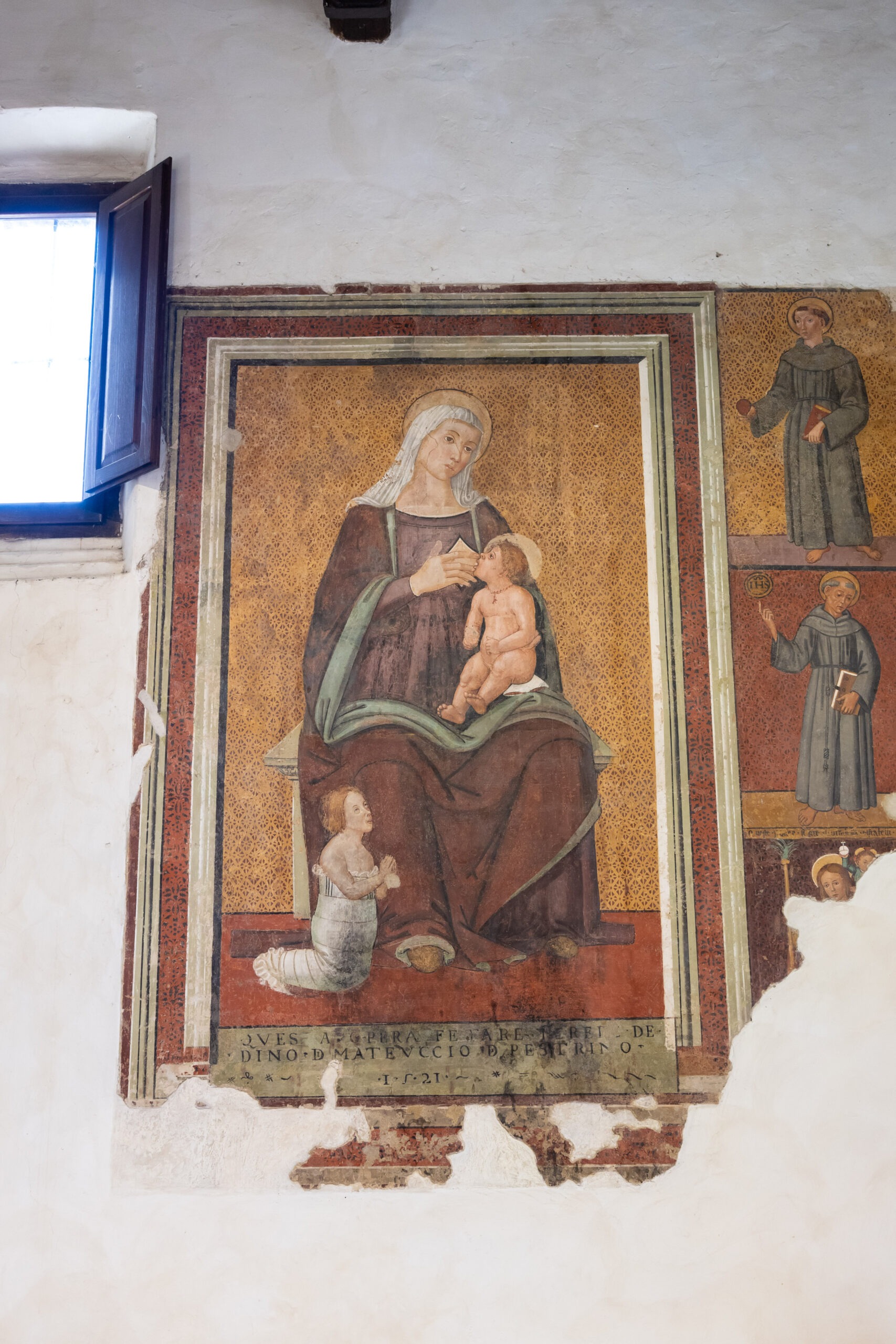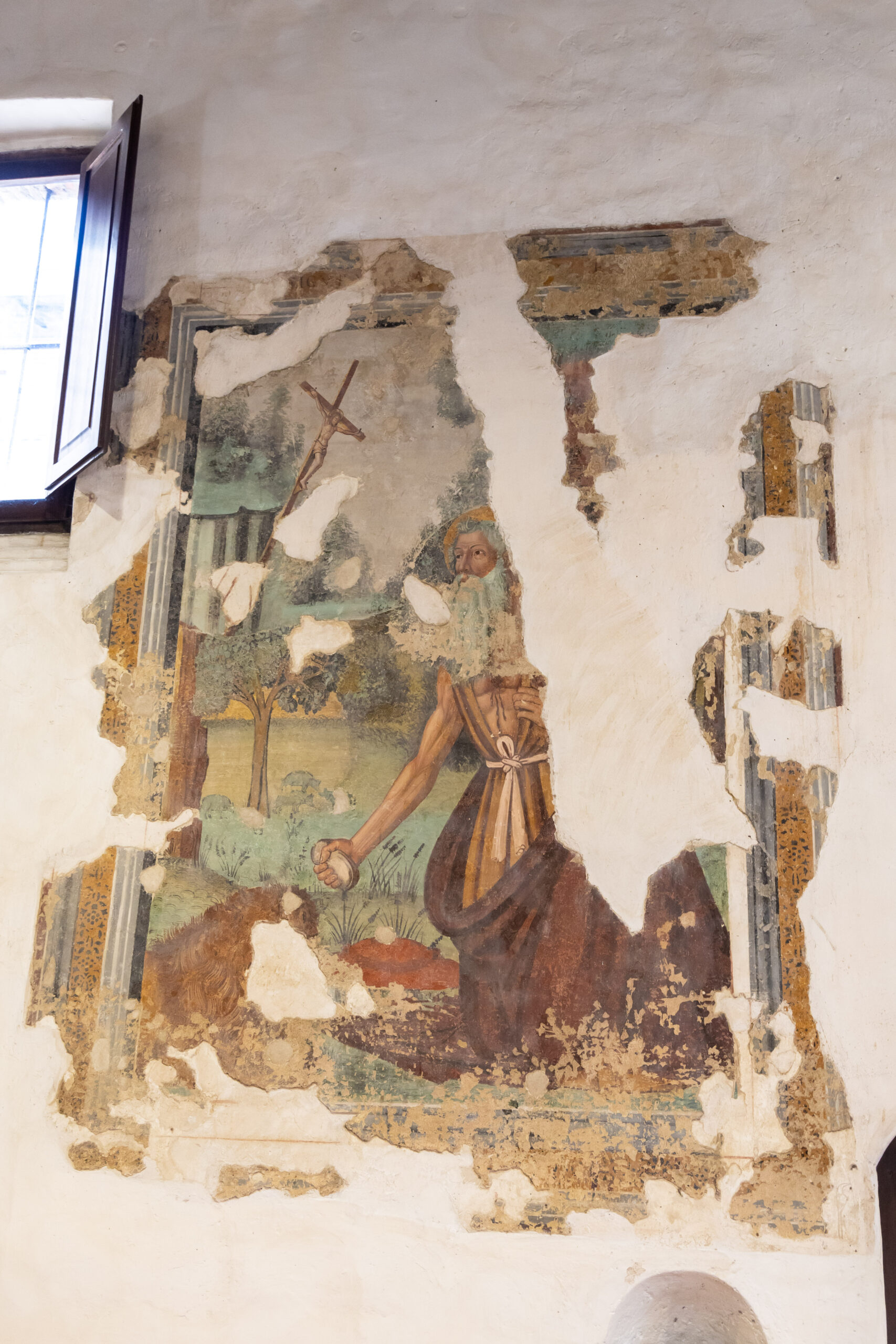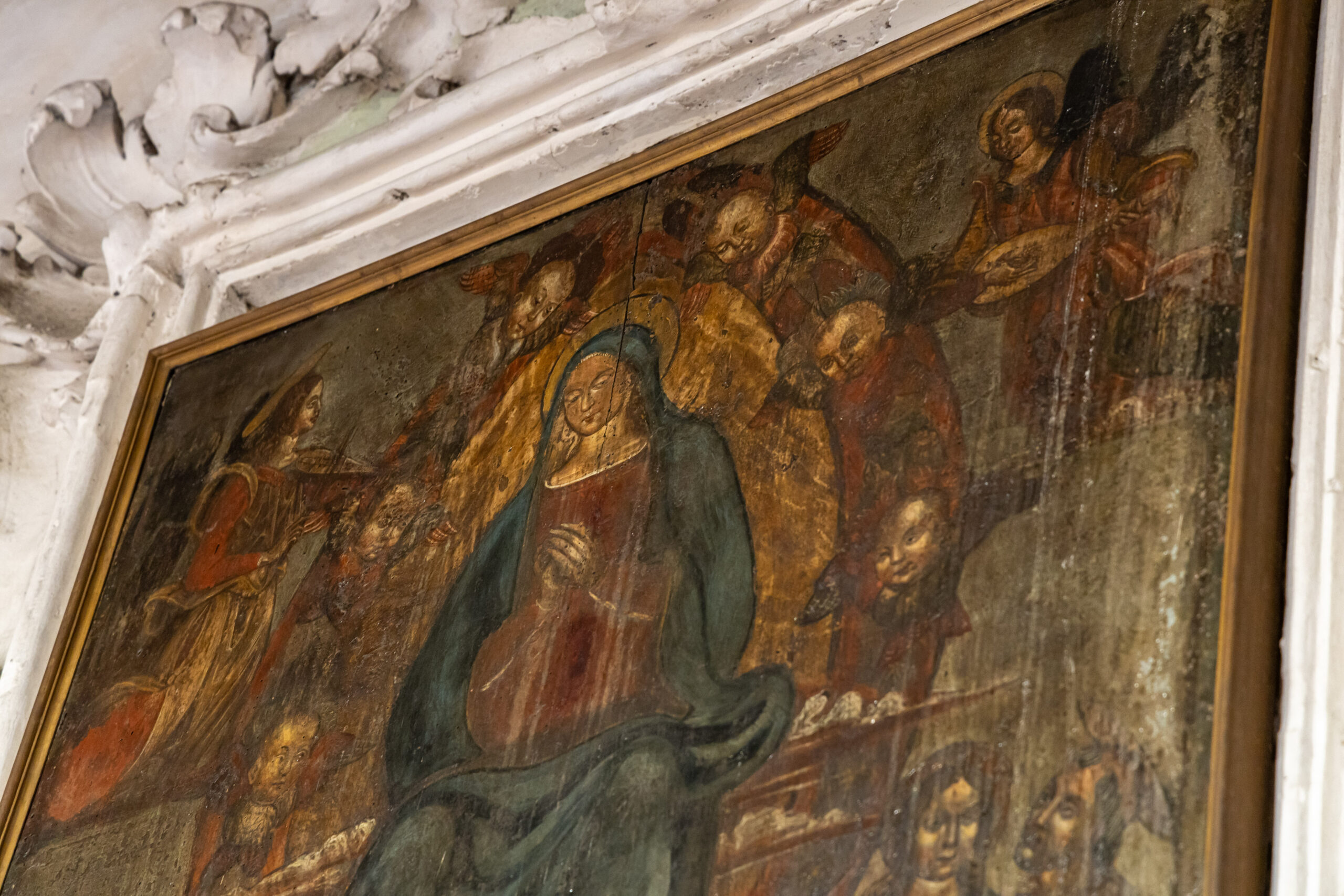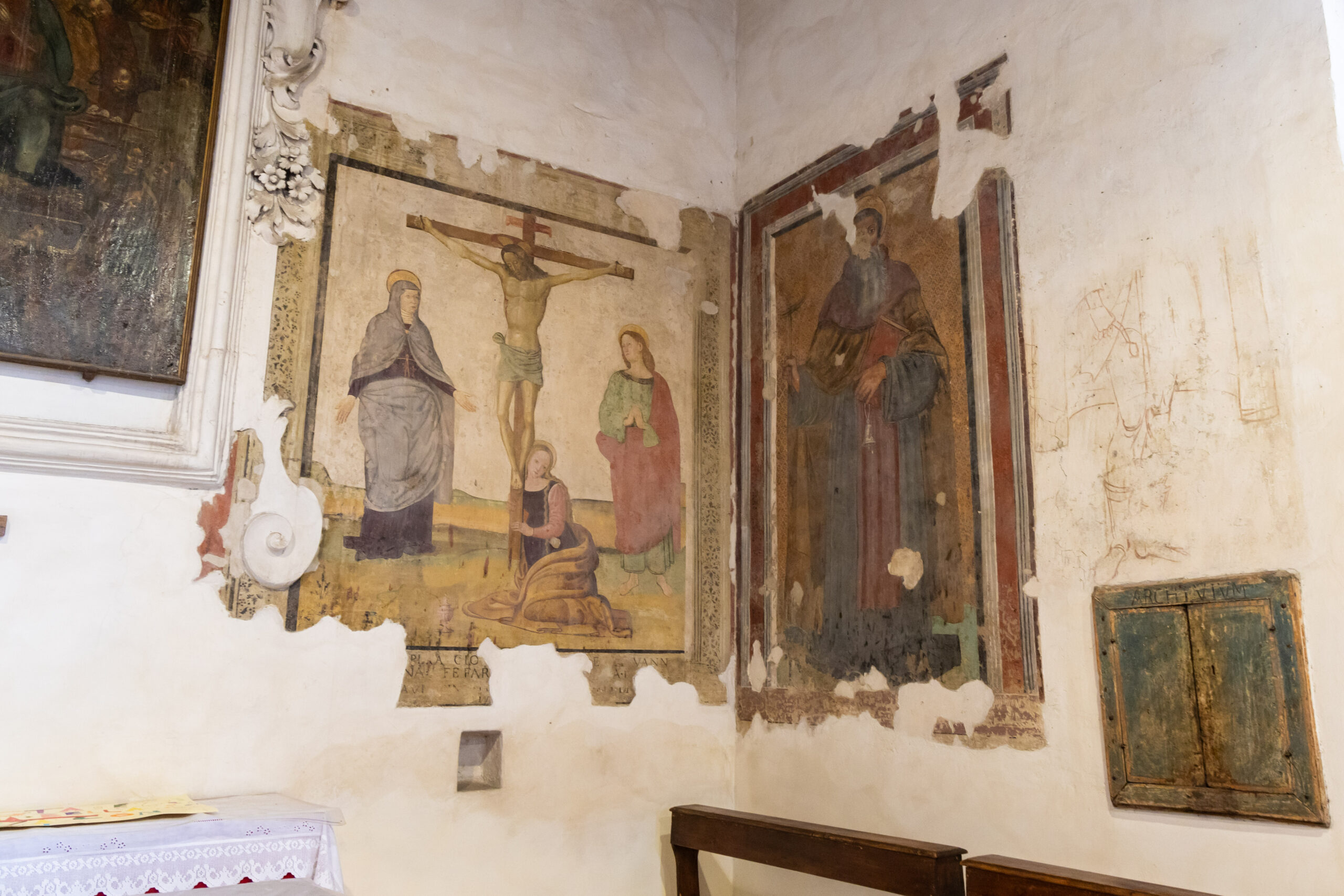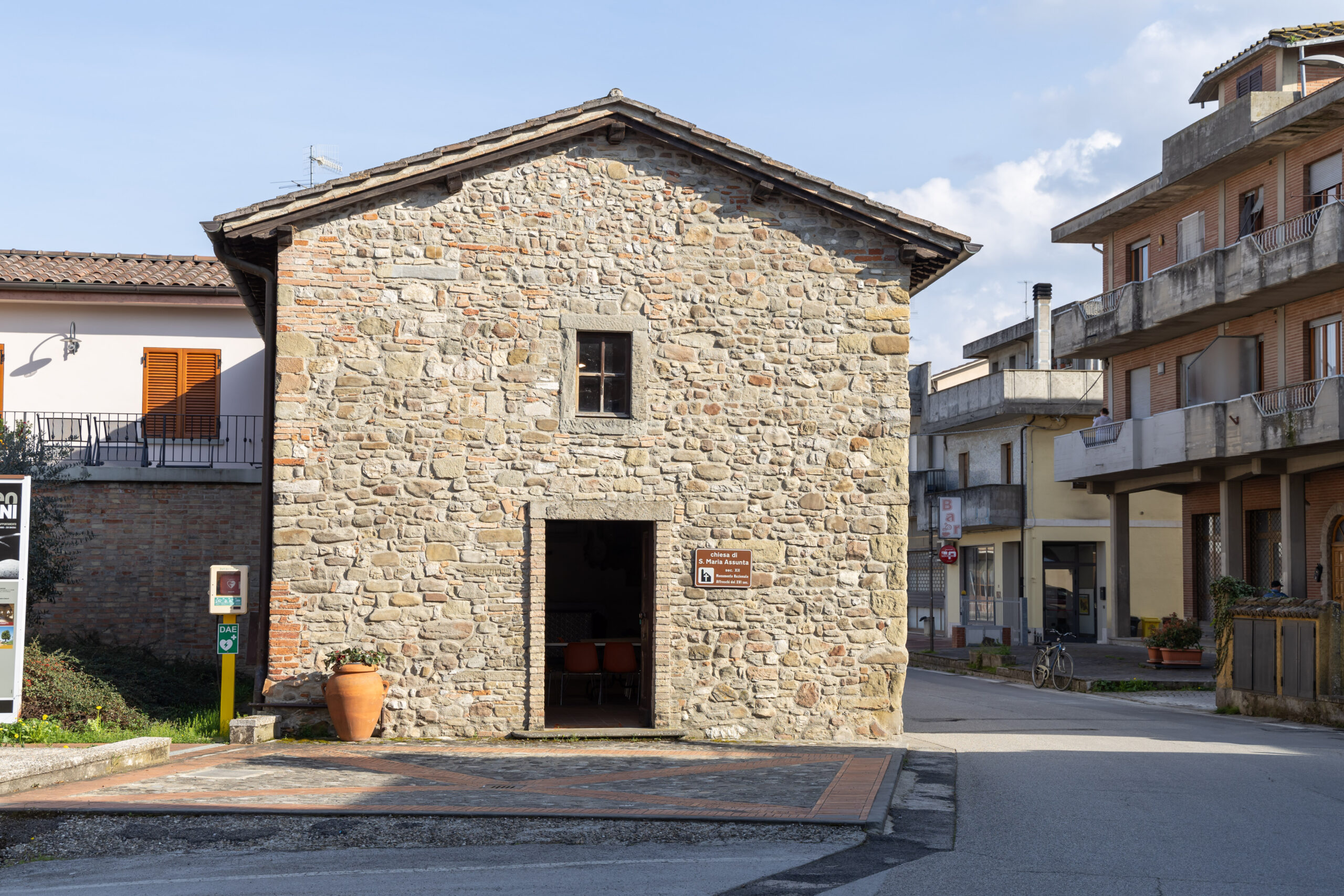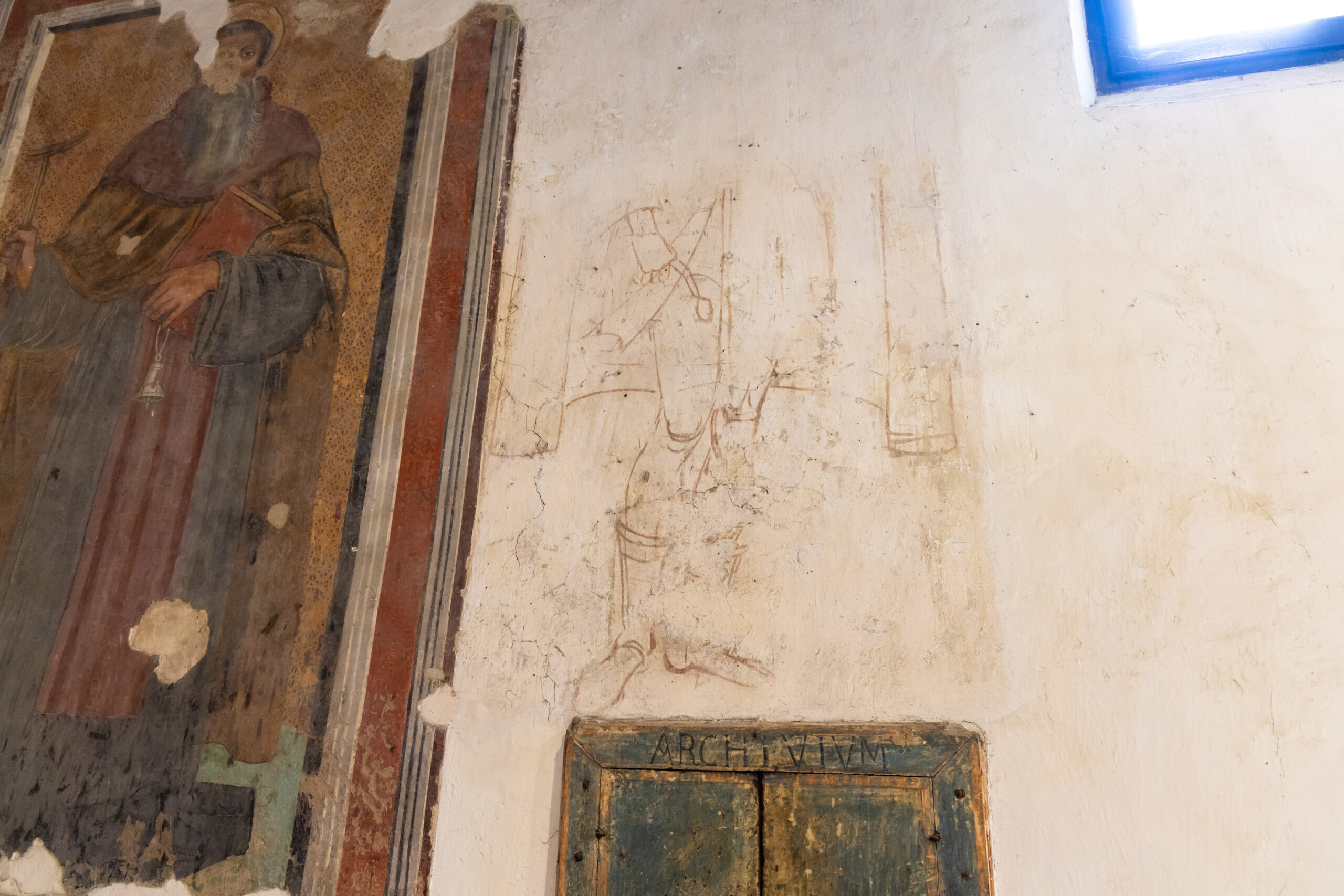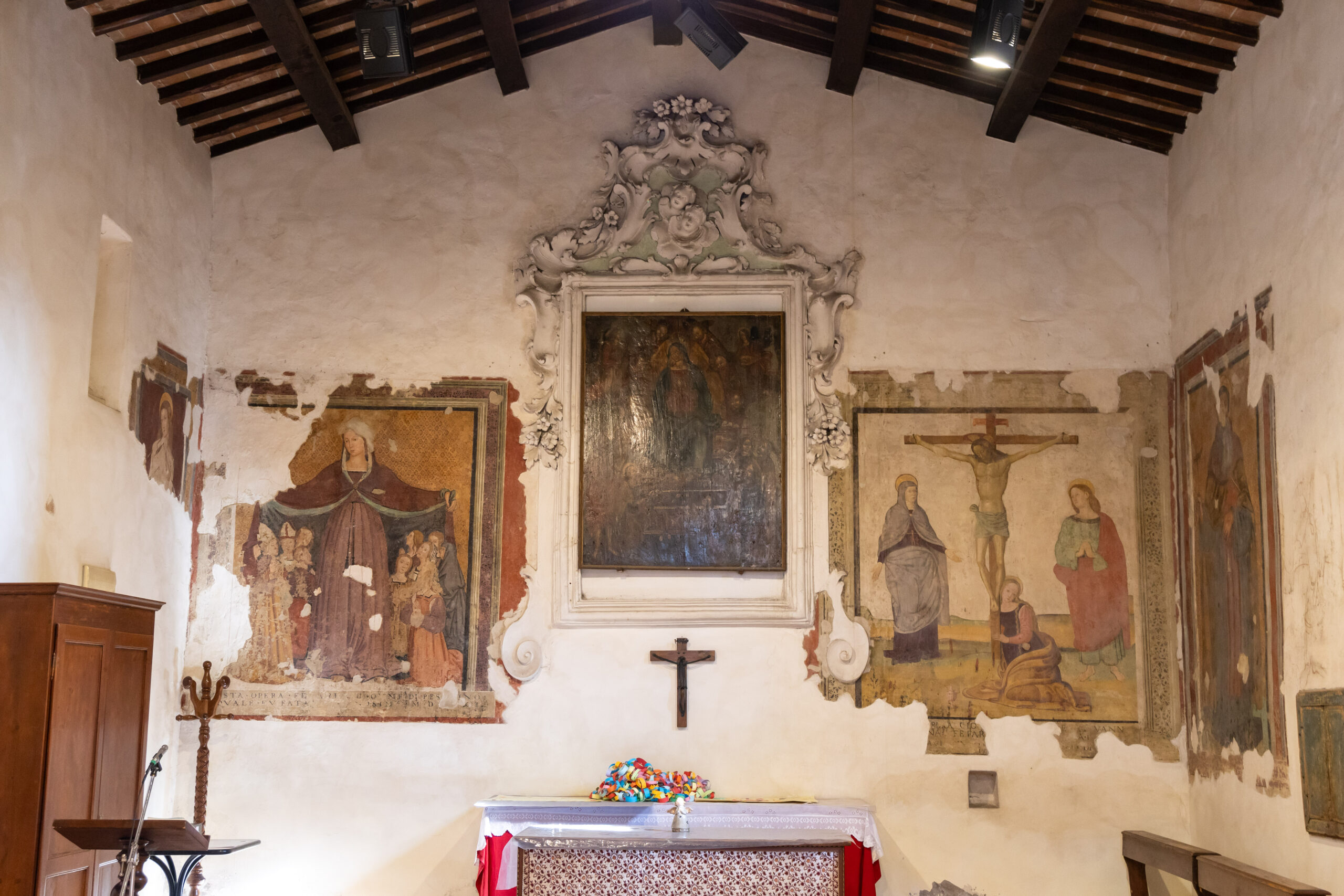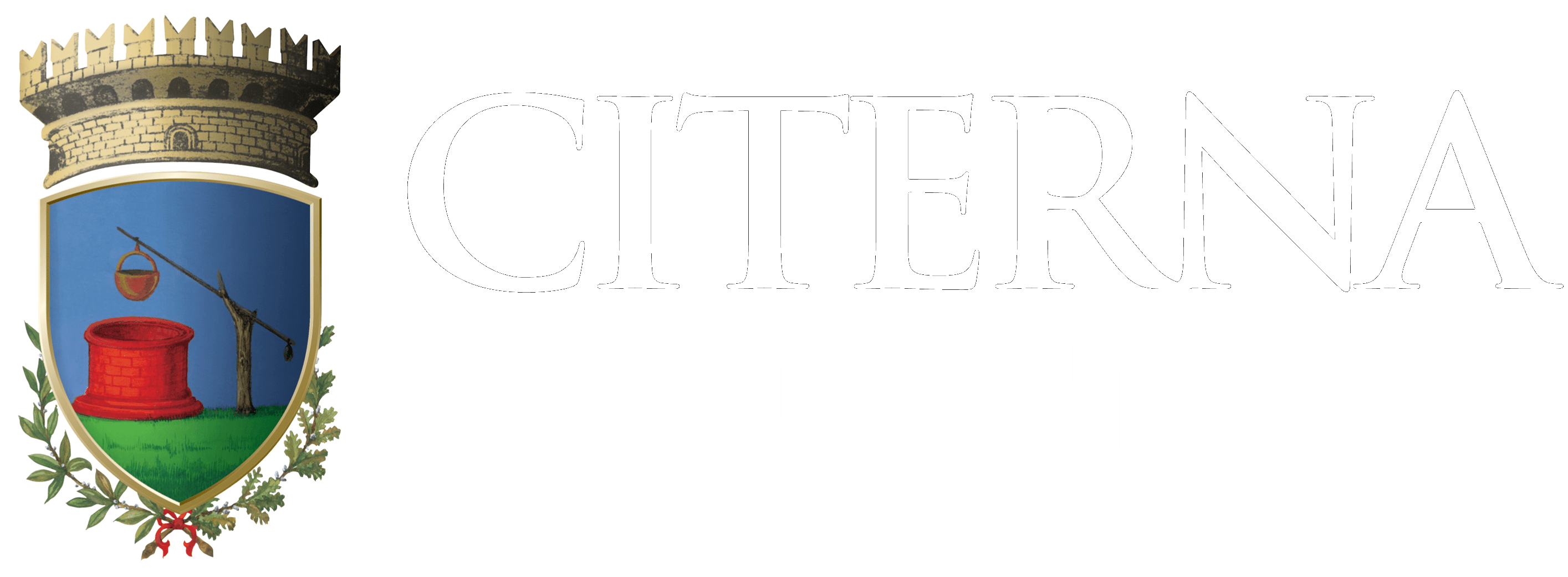La Chiesa
The Church of Santa Maria Assunta in Pistrino is designated as a “national monument” because it houses 14 valuable votive frescoes (1510-1536), mostly from the Umbrian school, which attest to the significance of this place as an object of popular devotion in the late 14th and early 15th centuries.
The first mention of the church dates back to 1273 in a land sale deed, but there are records dating as far back as 1155 when it was dedicated to Saant’Andera. It has a single nave with a trussed roof and features votive fresco decorations (1510-1536). In many of them are still visible inscriptions related to the patrons who commissioned them as votive offerings.
In the 1930s, the first restorations were carried out under the supervision of Professor Alessandro Bianchini from the Royal Superintendence for Medieval Art in Umbria. Between 1975 and 1978, the perimeter walls were repaired and the roof was consolidated. In the following decade, with the intervention of the Ministry of Cultural Heritage and the Superintendence of Perugia, a laborious restoration project was undertaken, leading to the complete recovery of the church and, in particular, the frescoes.
the frescoes
Left wall: San Sebastiano (fragment). Back wall: Madonna delle Grazie, admired for the grace of her face and the gentle tranquility of her eyes; Crucifixion, showing particular care in the depiction of Christ’s face and that of Maria Maddalena, with a sweetly sad expression as she embraces the cross at the feet of Jesus.
Right wall: Sant’Antonio Abbate, with a little boar at his feet; San Girolamo in the desert, with an intense and profound gaze; San Cristoforo with the Child; an expressive Santa Maria Maddalena; Santa Lucia; two Saints, one of whom is San Giovanni Battista; Madonna with Nursing Child (1521), with strong yet harmonious colors in the fresco; Sant’Antonio da Padova, holding a book and with a heart in his hands; San Bernardino da Siena, holding a book in his left hand and pointing to the monogram IHS with his right finger; San Cristoforo with Child (fragment); the Deposition, worn in color but powerful in design.
Counterfaçade: Virgin with the Child on her knees, on a damask background, and San Rocco. The saint is depicted, through an exceptional finesse of expression and features, with blonde nazarene-style hair; the purity of the line and the exquisiteness of the colors recall the works of the school of Perugia.
gallery
